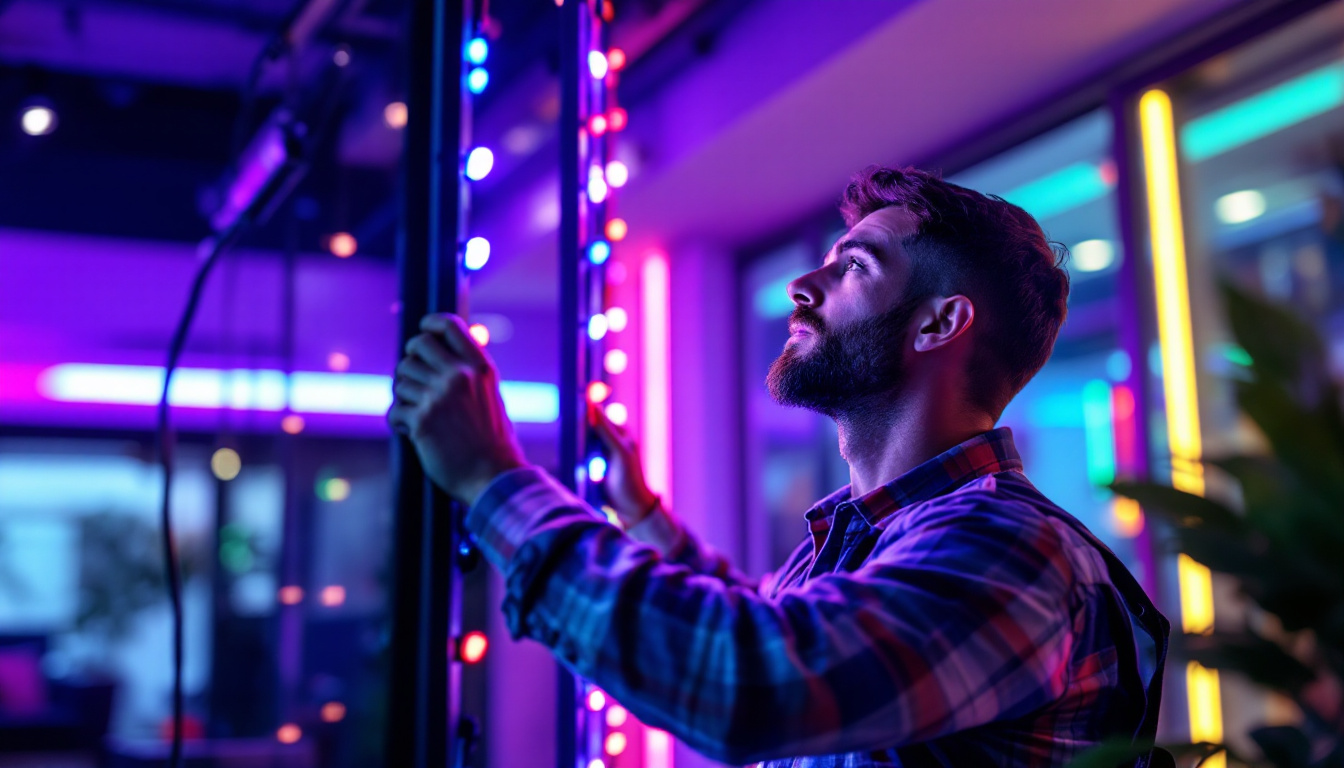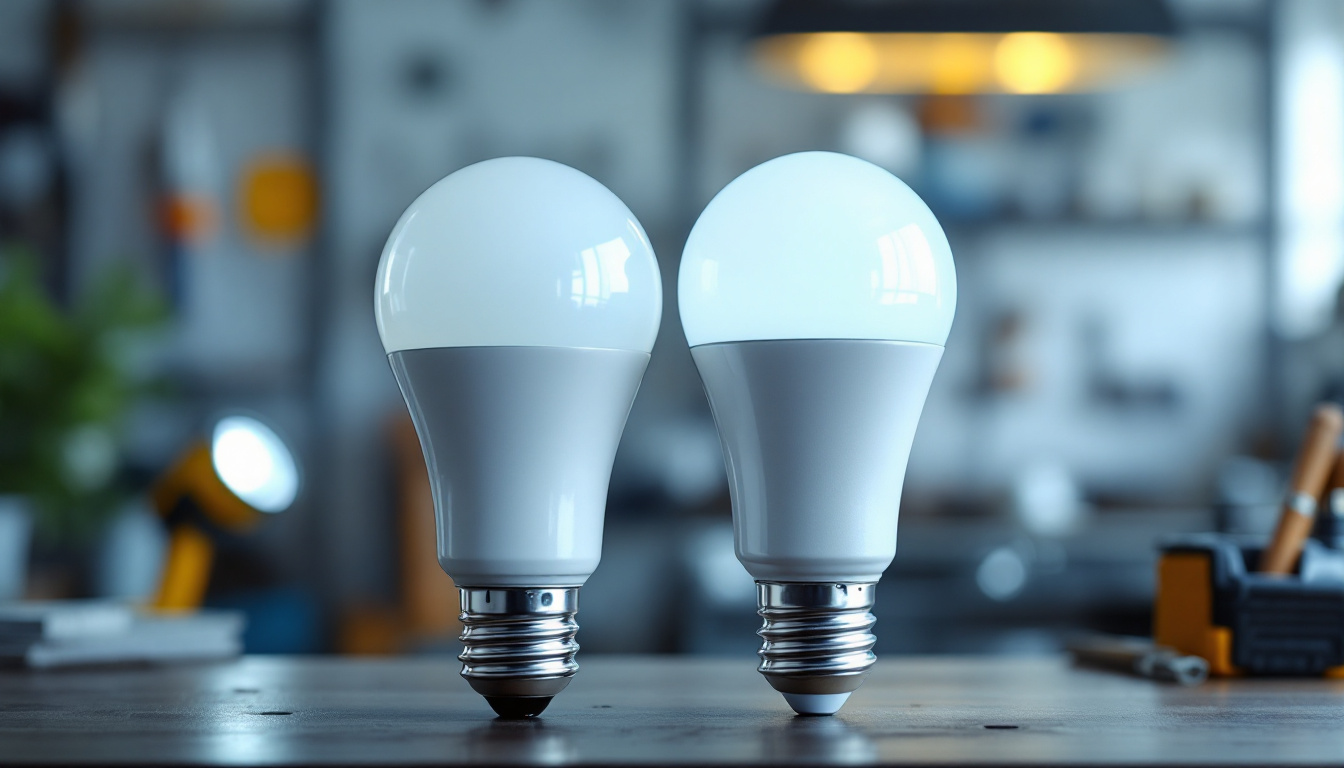
Effective lighting is crucial in any garage or workshop environment. For lighting contractors, understanding the best practices for garage shop lights can significantly enhance the functionality and safety of these spaces. This article delves into the essential considerations, types of lighting, installation tips, and maintenance practices that can elevate the quality of garage lighting projects.
Garage spaces often serve multiple purposes, from vehicle storage to workshops and hobby areas. Proper lighting is essential not only for visibility but also for safety and efficiency. Poor lighting can lead to accidents, reduced productivity, and even eye strain. Therefore, lighting contractors must prioritize effective illumination solutions tailored to the specific needs of the garage environment. A well-lit garage can transform the space into a functional area that encourages creativity and productivity, making it a valuable extension of the home.
Safety is paramount in any workspace, and garages are no exception. Inadequate lighting can obscure hazards, making it difficult to navigate the space safely. Contractors should ensure that lighting installations minimize shadows and provide even illumination across all areas. This can be achieved through strategic placement of fixtures and the use of high-quality bulbs that offer bright, clear light. Additionally, incorporating motion-sensor lights can enhance safety by automatically illuminating the area when someone enters, reducing the risk of trips and falls in dimly lit conditions.
Garages often serve various functions, from simple storage to complex mechanical work. Lighting contractors should consider the versatility of the space when selecting lighting solutions. Adjustable fixtures, such as track lighting or movable LED lights, can provide targeted illumination where needed, adapting to different tasks and activities. Furthermore, integrating smart lighting systems can offer even greater flexibility, allowing users to control brightness levels and color temperatures through mobile apps or voice commands. This adaptability not only enhances the functionality of the garage but also contributes to energy efficiency, as users can customize lighting based on their specific needs at any given time.
Moreover, the choice of lighting fixtures can also influence the overall aesthetics of the garage. Sleek, modern designs can complement the appearance of high-end vehicles or sophisticated tool collections, while vintage-style fixtures can add character to a more rustic workshop. By selecting the right lighting, homeowners can create an inviting atmosphere that reflects their personal style while still meeting practical requirements. This thoughtful approach to garage lighting not only enhances the usability of the space but also elevates the overall experience of working or spending time in the garage.
Choosing the right type of lighting is crucial for achieving optimal results in garage spaces. There are several types of garage shop lights available, each with its own advantages and applications. Understanding these options allows lighting contractors to make informed decisions that best suit their clients’ needs.
LED lights are becoming increasingly popular in garage settings due to their energy efficiency and longevity. They consume significantly less power compared to traditional incandescent or fluorescent bulbs, leading to lower energy bills. Additionally, LED lights have a longer lifespan, reducing the frequency of replacements and maintenance costs.
Moreover, LED technology offers a variety of color temperatures, allowing contractors to select warmer or cooler tones based on the specific requirements of the garage. This flexibility can create an inviting atmosphere while ensuring adequate visibility for various tasks. Furthermore, many LED fixtures now come with dimming capabilities, enabling users to adjust the brightness according to their needs, whether for detailed work or general ambiance. This adaptability makes LED lights an excellent choice for multi-functional garage spaces.
Fluorescent lights have long been a staple in garage lighting due to their bright output and energy efficiency. They are particularly effective in larger spaces where high levels of illumination are necessary. However, it’s important to choose high-quality fluorescent fixtures to avoid flickering and ensure consistent performance.
Contractors should also consider the placement of fluorescent lights to minimize shadows and maximize coverage. Installing fixtures in a grid pattern can help achieve even lighting across the entire garage area. Additionally, utilizing high-output fluorescent tubes can further enhance brightness, making them ideal for tasks that require precision, such as automotive repairs or intricate woodworking projects. With advancements in technology, some fluorescent lights now come with integrated motion sensors, automatically turning on when someone enters the garage, which can be a convenient feature for busy homeowners.
While incandescent bulbs are less energy-efficient than their LED and fluorescent counterparts, they still have their place in garage lighting. They provide a warm light that can create a cozy atmosphere, making them suitable for garages that double as hobby spaces or workshops.
However, due to their shorter lifespan and higher energy consumption, contractors should recommend incandescent lighting primarily for specific areas rather than as the primary source of illumination. For instance, using incandescent bulbs in task lighting fixtures, like lamps or under-cabinet lights, can enhance the overall warmth and comfort of the space. Additionally, combining incandescent lighting with other types of fixtures can create a layered lighting effect, providing both functional and aesthetic benefits. This approach allows for a more versatile garage environment that caters to a variety of activities, from casual tinkering to serious projects.
Proper installation is critical to achieving the desired lighting outcomes in garage spaces. Lighting contractors should adhere to best practices to ensure that installations are safe, effective, and compliant with local codes.
Before installation, a thorough assessment of the garage space is essential. This includes measuring the dimensions, identifying potential obstacles, and determining the primary functions of the garage. Understanding how the space will be used will guide the selection and placement of lighting fixtures.
Contractors should also consider the height of the ceiling, as this will impact the type of fixtures used and their placement. Higher ceilings may require more powerful fixtures or additional units to ensure adequate illumination.
Strategic placement of lighting fixtures is vital for achieving optimal coverage and minimizing shadows. A common practice is to install fixtures in a grid pattern, ensuring that light is evenly distributed throughout the garage. Additionally, contractors should position lights to illuminate work areas, storage spaces, and entry points effectively.
For garages with specific work zones, such as tool benches or work tables, task lighting can be integrated to provide focused illumination where it’s needed most. Adjustable fixtures can also enhance flexibility, allowing users to direct light precisely where it’s required.
In today’s environmentally conscious world, energy efficiency is a significant consideration for lighting contractors. Implementing energy-efficient lighting solutions not only reduces utility costs but also contributes to sustainability efforts.
Smart lighting technology is revolutionizing the way garages are illuminated. By integrating smart bulbs and fixtures, contractors can enable features such as remote control, dimming capabilities, and automated scheduling. This allows users to customize their lighting based on their specific needs and preferences, further enhancing energy efficiency.
Additionally, smart sensors can be installed to automatically turn lights on or off based on occupancy, ensuring that energy is not wasted when the garage is unoccupied.
When selecting lighting fixtures and bulbs, contractors should prioritize Energy Star rated products. These products meet strict energy efficiency guidelines set by the Environmental Protection Agency, ensuring that they consume less energy while providing the same level of illumination as traditional options.
By recommending Energy Star products to clients, contractors can help them save money on energy bills while also contributing to a more sustainable future.
Regular maintenance is essential to ensure that garage lighting systems continue to perform optimally over time. Lighting contractors should provide clients with guidance on maintenance practices to prolong the lifespan of their lighting installations.
Conducting routine inspections of lighting fixtures is crucial for identifying any issues before they escalate. Contractors should advise clients to check for flickering lights, burnt-out bulbs, or any signs of damage to fixtures. Addressing these issues promptly can prevent more significant problems and ensure consistent lighting performance.
Additionally, cleaning fixtures regularly can help maintain brightness and efficiency. Dust and grime can accumulate on light fixtures, reducing their effectiveness. Simple cleaning with a damp cloth can often restore their original performance.
As technology advances, lighting options continue to improve. Contractors should stay informed about the latest developments in lighting technology and recommend upgrades to clients when appropriate. For instance, if newer, more efficient LED options become available, clients may benefit from replacing older fixtures to enhance energy efficiency and lighting quality.
Encouraging clients to invest in upgrades can lead to long-term savings and improved functionality in their garage spaces.
Effective garage lighting is essential for safety, productivity, and overall functionality. Lighting contractors play a pivotal role in ensuring that garage spaces are equipped with the right lighting solutions tailored to their clients’ needs. By understanding the importance of lighting, selecting appropriate types of fixtures, adhering to installation best practices, and promoting energy efficiency, contractors can significantly enhance the quality of their garage lighting projects.
Incorporating smart technology and maintaining lighting systems will further elevate the user experience, ensuring that garages remain well-lit, safe, and efficient environments for all activities. By following these best practices, lighting contractors can deliver exceptional results that meet the diverse needs of their clients and contribute to a brighter, more productive future.
Ready to elevate your garage lighting installations with the best products on the market? Look no further than LumenWholesale, where we provide contractors with exceptional, spec-grade lighting options at unbeatable wholesale prices. Our commitment to quality and affordability means you can access a wide range of high-performance lighting solutions tailored to your projects, without the burden of inflated costs. Plus, with free shipping on bulk orders, you can stock up on all your lighting needs while keeping your bottom line in check. Don’t compromise on quality or value—choose LumenWholesale for Wholesale Lighting at the Best Value and make your next garage lighting project a shining success.

Discover essential insights into 4 bulb fluorescent lighting systems with our comprehensive guide tailored for lighting contractors.

Unlock the secrets of RGB LED lighting with this comprehensive guide tailored for lighting contractors.

Discover how LED solar lights can transform outdoor spaces while boosting profitability in lighting installations.

Discover the essential guide for lighting contractors comparing LED and fluorescent bulbs.